Best Orlando Treatment for a
ANKLE SPRAIN
Are you not able to continue your cherished hobbies or everyday activities because of sharp pain in your foot or ankle when you move? With our expert doctors’ help, you can get to the root of your symptoms and get back to doing what you love quicker and easier.
Read More Ask A QuestionBest Orlando Treatment for a
ANKLE SPRAIN
Are you not able to continue your cherished hobbies or everyday activities because of sharp pain in your foot or ankle when you move? With our expert doctors’ help, you can get to the root of your symptoms and get back to doing what you love quicker and easier.
Read More Ask A QuestionHere Is Everything You Need To Know About An Ankle Sprain, What Causes It, and The Best Way to Treat It
Click the tabs below to get direct answers to your questions
What is an ankle sprain?
On a given day, more than 25,000 people will sprain their ankle. It can happen when you land the wrong way while you’re playing sports or participating in other physical activities, or even when you step on an uneven surface while walking. It can happen to athletes, non-athletes, children, and adults.
What are common causes of an ankle sprain?
Sprains are injuries to ligaments, the “bands” that hold joints together. Ankle sprains occur when the foot twists or turns beyond its normal range of movement, causing the ligaments to stretch beyond their normal length. If the force is too strong, the ligaments may tear
Ankle sprains also are classified as acute, chronic, or recurrent:
- An acute sprain occurred recently—usually within the past few weeks—and is in an active stage of healing.
- A chronic sprain continues to cause symptoms beyond the expected time for normal healing.
- A recurrent sprain occurs easily and frequently, usually with only minimal force.
Where does it hurt?
In most cases of ankle pain from a sprain, patients will complain of pain on the front and outside of the ankle. Other times, but less commonly, people will complain of inside ankle pain or pain in the ankle joint. This is what makes ankle pain a complex case and there are many different causes of ankle pain. Even your low back can cause ankle pain. Because of this, it’s possible to feel the pain in other parts of your body. This is called referred pain. Understanding the root cause of your pain is fundamental to treating your pain in the long run & will decrease your dependence on painkillers or treatment that only addresses the symptoms.
What are common symptoms of an ankle sprain?
With
- Pain
- Swelling
- Inability to bear weight on the ankle
With most sprains, you feel pain right away at the site of the ligament tear. Often the ankle starts to swell immediately and may bruise. The ankle area usually is tender to the touch and, when you move the ankle, it hurts.
In more severe sprains, you may hear or feel something tear, along with a “pop” or “snap.” You probably have extreme pain at first and are not able to walk or even put weight on your foot. Usually, the more pain and swelling you have, the more severe your ankle sprain is, and the longer it will take to heal.
To Get A "Insider's Look" At Our Treatment Approach And How We Get Results...
Click Below To Watch Our Exclusive Webinar! It's Simple, Short, and It's Free!

- Learn The Essential First Step... So You Can Get Pain Free Again
- See Why Treatment Needs To Be Individualized, Not Standardized...So You Get Faster Results!
- Learn How You Can Save Money...So You Don't Have To Waste $1000's On Unnecessary Treatments
To Get A "Insider's Look" At Our Treatment Approach And How We Get Results...
Click Below To Watch Our Exclusive Webinar! It's Simple, Short, And It's Free!

- Learn The Essential First Step...So You Can Get Pain Free Again
- See Why Treatment Needs To Be Individualized, Not Standardized...So You Get Faster Results
- Learn How You Can Save Money...So You Don't Have To Waste $1000's On Unnecessary Treatments
Can an ankle sprain be treated?
Yes, ankle pain can be treated and with great results. Even better, many times it can be treated conservatively without needing injections, pain medications, or surgeries if you can address it early enough. The key to treatment is to solve the root cause of your pain so you can get the best results and a long-term outcome.
Some root causes of ankle pain can be:
- Decreased hip and knee range of motion
- Poor running form
- Lack of ankle range of motion
- Weak hip and glute muscles
- Overload in training
- Poor lifting and running biomechanics
- Neural tension
- Leg length discrepancy
- Previous leg or hip injury
- Calf muscle weakness
- Poor footwear or running shoes
- Poor biomechanics with sports
- Trigger points in calf muscles
- Lack of foot range of motion
If you have failed multiple treatment approaches already, your clinician missed the real root cause of your pain and was just chasing the symptoms. The pain or symptom is the effect, not the cause. What do I mean by this? Say your fire alarm goes off in your house. Its purpose is to protect you and make you aware that something is wrong, i.e., that there is a fire in your house. The “alarm” is like your pain (your body’s way of telling you something is wrong) and the “fire” is the root cause. When the fire alarm goes off, you don’t run upstairs and just turn it off, right? You run through the house with the fire extinguisher, trying to find the room where the fire is at. You try to find out what caused the alarm to go off so you can put it out. Once the fire is out, then the fire alarm can go off. Solve the “root” cause of your pain, and then the pain (“the effect”) eventually goes away.
Additionally, there is a common root cause which many clinicians misdiagnose. They treat the ankle pain with a cookie cutter approach, hoping it will work and treat it as a simple muscle problem. They tend to rely on stretching, ultrasound, massage, and focus treatment directly on the ankle joint. However, often the root cause is missed and the symptoms return. If you have failed multiple treatments and still have ankle pain, then maybe it’s not just a calf problem? There is probably something else adjacent to the ankle, like the knee, calf muscle, or foot, that is overloading or stressing the joint to cause your pain. Other neighboring joints can influence your primary complaint area causing your pain. So many healthcare clinicians treat pain like this and thus show poor treatment outcomes which results in the pain coming back. Why? They missed the root cause of your ankle pain. This is also the case when patients turn to injections, nerve blocks and other surgeries which are still not effective because the actual problem still is not solved, their treatment was just chasing the pain.
The first step in treatment is to identify the root cause of your pain. A specific and individualized treatment approach for your type of pain can lead to a successful outcome for you and resolve your symptoms for the long term. This is why you can’t rely on a standard cookie cutter approach; you need a customized and individualized treatment approach specifically for your type of ankle sprain.
What happens if it goes untreated?
Minor case – If it is a minor case of ankle pain, research shows that many acute cases of pain may spontaneously go away in 4-8 weeks. The key to preventing it from becoming a more severe chronic case is to solve the root cause of the ankle pain and determine what actually is causing it. But who wants to wait 8 weeks to get pain free? Let’s try to solve the root cause of your pain in 2-3 weeks and address all of the risk factors present (so it never returns!) and get you back to your favorite activities faster! We still recommend that you get it checked out by one of our board-certified physical therapists to ensure that it is just a minor case, to solve all risk factors, and to get the optimal outcome in the fewest visits needed. Most minor cases resolve on their own in time or get better with some stretching and strengthening. But, the sooner you take action, the sooner you are pain-free. (And research supports this!)
Severe case – If it’s more of a severe and chronic case of ankle pain, your pain will probably start to worsen and increase because the root cause and underlying risk factors of the pain are not being treated. Many people turn to pain medication and injections at this time but this only blocks the pain for short term. You may not feel the pain when taking pain medications, but the underlying problem is still there. Many people say after the pain medication and injection wears off, then usually the pain returns and sometimes it returns even worse. This is when you cannot run, jump, or play sports. Once the root cause is addressed, then we can start decreasing your pain, regardless of how chronic and severe the pain is. This is the crucial first step. It just may take more time to recover from a chronic case. Usually with chronic and severe cases, the longer you have your pain and injury, the longer it takes to resolve.
What outcome can you expect from treatment?
As we’ve discussed, the first step is to solve the root cause of your ankle pain. This is the most essential step to plan a treatment specialized for you and your unique type of pain. Your root cause will guide your treatment and dictate what is the best way to treat your pain. This, along with identifying risk factors that may be predisposing you to have your pain and injury, will allow you to start getting pain free again. The next step is to start decreasing pain, modifying activities, and start addressing all of the impairments causing your pain which we discovered during your evaluation. With each session, pain should start to decrease and you should start to regain range of motion with less pain and symptoms. Any radicular and referred pain should resolve fast as well. At this point, we begin light and basic strengthening only if it does not increase pain. Treatment will consist
The next step is to achieve full range of motion, (which should correlate to being
To Get A "Insider's Look" At Our Treatment Approach And How We Get Results...
Click Below To Watch Our Exclusive Webinar! It's Simple, Short, and It's Free!

- Learn The Essential First Step... So You Can Get Pain Free Again
- See Why Treatment Needs To Be Individualized, Not Standardized...So You Get Faster Results!
- Learn How You Can Save Money...So You Don't Have To Waste $1000's On Unnecessary Treatments
To Get A "Insider's Look" At Our Treatment Approach And How We Get Results...
Click Below To Watch Our Exclusive Webinar! It's Simple, Short, And It's Free!

- Learn The Essential First Step...So You Can Get Pain Free Again
- See Why Treatment Needs To Be Individualized, Not Standardized...So You Get Faster Results
- Learn How You Can Save Money...So You Don't Have To Waste $1000's On Unnecessary Treatments
How is it diagnosed?
Your physical therapist can perform a full evaluation. Manual tests are used to determine how unstable your ankle is. The therapist also will decide whether further tests are required or whether consultation with another health care provider is necessary. In some cases, x-rays might be needed to determine whether there is a broken bone. Occasionally, with severe sprains, magnetic resonance imaging (MRI) might be ordered to determine the extent of the damage.
What outcome can you expect from treatment?
For most common orthopedic cases, imaging is not needed and the diagnosis can be made with a simple physical therapy evaluation. No need to waste thousands of dollars on unwarranted diagnostic imaging. We also have clinical tests which we can perform to help rule in and rule out pathologies that correlate to MRI findings (which is WAY cheaper than an MRI!). An expensive MRI may just tell us what we already know. Also, often times the positive findings found on x-rays, MRIs, and EMGs may not actually be the root cause of your pain. What does that mean? Many positive findings on an MRI are also found in asymptomatic (pain-free) individuals, so diagnostic imaging may not be able to tell us what is actually causing your pain. For example: many people have a herniated disc in their low back but do not have any low back pain. So if herniated discs can cause no pain, just because someone with low back pain has a herniated disc does not mean that is what’s causing their pain. The key is to find out if your clinical evaluation findings during your evaluation at Pursuit match the MRI findings. If so, then we can decide what is the best way to treat it.
How can a Physical Therapist treat it?
For the first 24 to 48 hours after injury, ankle sprains usually are treated by resting the ankle on a pillow or stool, using elastic bandages or supports, and 10-minute ice treatments. A physical therapist can decide if you should use crutches or a cane to protect your ankle while it is healing.
The therapist can design a specific treatment program for you to follow at home to help speed your recovery. Some sprains may require physical therapy treatments to help relieve swelling and pain, such skilled hand movements called manual therapy, special exercises, ice or heat treatments, and electrical stimulation. More severe sprains may require a special brace to provide extra support to your ankle.
Your physical therapist’s overall goal is to return you to the roles you perform in the home, at work, and in the community. Without proper rehabilitation, serious problems—such as decreased movement, chronic pain, swelling, and joint instability—could arise, severely limiting your ability to do your usual activities.
Your physical therapist will select from treatments including:
Range-of-motion exercises. Swelling and pain can result in limited mobility of the ankle. A physical therapist teaches you how to do safe and effective exercises to restore full movement to your ankle.
Muscle-strengthening exercises. Ankle muscle weakness may cause long-term instability of the ankle and new ankle injuries. Your physical therapist can determine which strengthening exercises are right for you based on the severity of your injury and where you are in your recovery.
Body awareness and balance training. Specialized training exercises help your muscles “learn” to respond to changes in your environment, such as uneven or unstable surfaces. When you are able to put full weight on your foot without pain, your physical therapist may prescribe these exercises to help you return to your normal activities. For instance, your physical therapist might teach you how to do this: with or without your eyes closed, stand on one leg or stand on a wobble board to challenge the muscles around your ankle.
Functional training. When you can walk freely without pain, your physical therapist may begin “progressing” your treatment program to include activities that you were doing before your injury, such as walking in your neighborhood, jogging, hopping, or modified running. This program will be based on the physical therapist’s examination of your ankle, on your goals, and on your activity level and general health.
Activity-specific training. Depending on the requirements of your job or the type of sports you play, you might need additional rehabilitation that is tailored
How long does it take for recovery?
Recovery time for an ankle sprain depends on multiple factors:
- The severity and chronicity of your pain
- Whether your pain is an easy or complex case
- If the root cause of your pain was solved or if it was missed (this is the key to getting a great recovery!)
- How long you have been in pain for and when you need to be pain-free by
- Other therapies and treatments you have tried
- Which medical professional(s) you saw prior to seeing us
- How active you are in trying to resolve your pain
- Which treatment approach is chosen and if it is proven to work for your pain
There are many factors that influence your recovery time and every patient’s recovery time is different. If you do nothing and don’t pursue treatment, it could gradually get better on its own, you could continue to have the same pain persist, or it could continue to get worse. As stated earlier, most acute cases may or may not resolve in 4-8 weeks. If you get expert treatment that solves the root cause of your pain, some cases resolve in 1-3 weeks! Then you can get back to sports, exercise, and your favorite activities without flare-ups and recurrences. Some of our patients are pain-free in 1-3 visits and back to 100% in 2 weeks!
If it is a complex case with chronic pain, your recovery may take longer, but you can still get a good outcome. Some chronic cases can resolve as fast as 2 months but can take as long as 4-6 months. It varies with every patient because every case of an ankle sprain pain is different. Every patient’s recovery varies depending on the factors listed above. After a thorough evaluation here at Pursuit Physical Therapy, you will know your exact timeline of recovery, your prognosis, and when you should reach your goals.
How much does it cost?
The average cost of care for a case of spine pain in the US is $1800-$6600. This high price is due to many factors: the over-inflated cost of healthcare, the over expensive cost of unwarranted imaging (x-rays, CT scans, and MRIs) that is not needed, over-utilization of care (which increases the number of visits needed to be treated, requiring multiple visits to different doctors and physical therapists for the same diagnosis), and getting billed for unnecessary and unproven treatments that you don’t even need. All of these factors increase cost and this is why healthcare is so expensive. We strive to end that unnecessary, expensive cycle. In fact, we are currently publishing our first-year data with the University of Central Florida that shows the cost-effectiveness of our treatment approach.
This year, the average cost of our care was shown to be $814-$1141. Some of our patients get even as low as $315 for the full treatment! So if you have a deductible of $3,000-$10,000 and you have to pay out of pocket for your treatment, we can save you lots of money.
Remember, every case of pain is different and not all foot and ankle pain is the same. It is hard to predict exactly how much your treatment is going to cost you. But after a thorough evaluation, we can tell you exactly what is causing your pain, how long it is going to take, what the best way to treat it will be, and exactly how much it is going to cost. We have no hidden fees, no co-pays, and no miscellaneous bills that you will be surprised by 3 months after you receive treatment. Your pain, your diagnosis, your goals, and what is best for you dictate your treatment and how much it will cost, and while it varies for every patient, treatment at Pursuit is still much more affordable than standard healthcare.
How long are sessions?
Our evaluations are always one-on-one with one of our board-certified specialists and 60-90 minutes long. We like to perform thorough evaluations so we can solve the root cause of your pain, identify all risk factors, and make sure that we do it right. After the evaluation, you will know your diagnosis, the root cause of why you have your pain and symptoms, your prognosis, an expected timeline of when you should see results, what the best way to treat your pain is, how much it will cost, and your expected recovery outcome. We want you to fully understand everything about your pain and injury. What is best for you and will get you the best outcome is what will dictate your care and treatment. There will be plenty of time for you to ask questions so we can make sure you fully understand why you have your pain and what the best way to treat it will be. After the evaluation is completed, all treatment sessions are 60 minutes going forward and still one-on-one with your physical therapist. You and your physical therapist will design a customized treatment plan that works for you and that will achieve your goals.
How can it be prevented?
If you have sprained your ankle more than once in your life, you might be at risk for re-injury in the future if the ligaments did not heal properly or if your ankle never returned to its normal strength. And, if you returned to sports or activities too soon after injury, your ankle might give you persistent pain or might easily or frequently sprain. A physical therapist determines when you are ready to return to your activities and sports and helps make sure that your ankle is strong and ready for action, using body awareness and balance training, exercises to correct imbalances and weakness of specific muscles, exercises to improve mobility, and a progressive functional training program that allows you to gradually and safely return to your activities without injury.
What are the next steps?
Getting started is simple. The first step, and the key to getting you
Solve the root cause of your pain
How Our Treatment is Different
We believe that working with a specific specialist for your care is the best way to solve the root cause of your pain. Work one-on-one with a Doctor of Physical Therapy every time your visit our office.
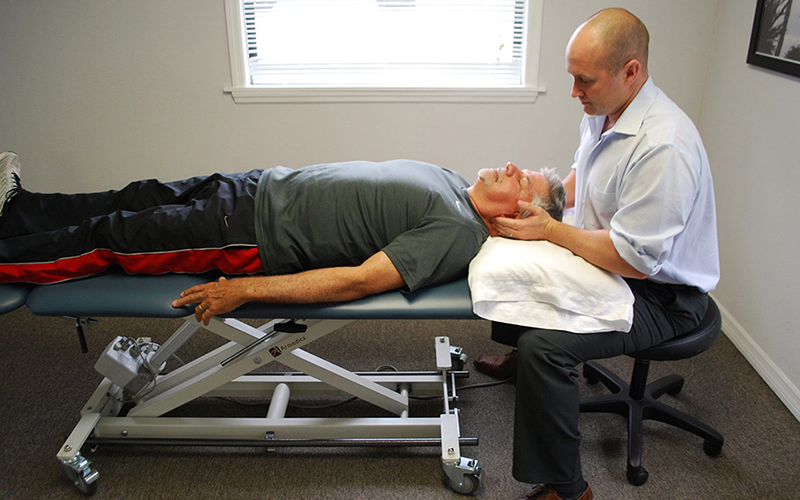
Exclusive one-on-one patient care
While most clinics will give you a limited amount of time with your Doctor, we believe that true results come from consistent one-on-one therapy.
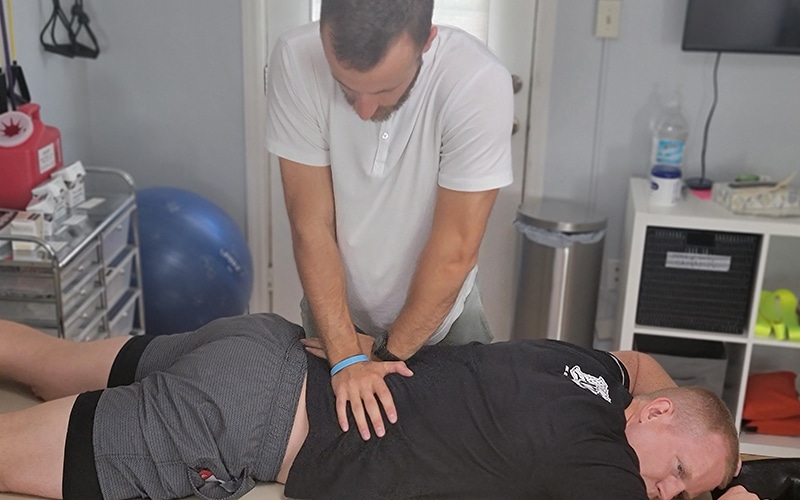
Work with your specialist every visit
Stop being handed off to trainees or non-Doctors for your Physical Therapy. At Pursuit, you'll work exclusively with your Doctor of Physical Therapy that specializes in your specific needs.
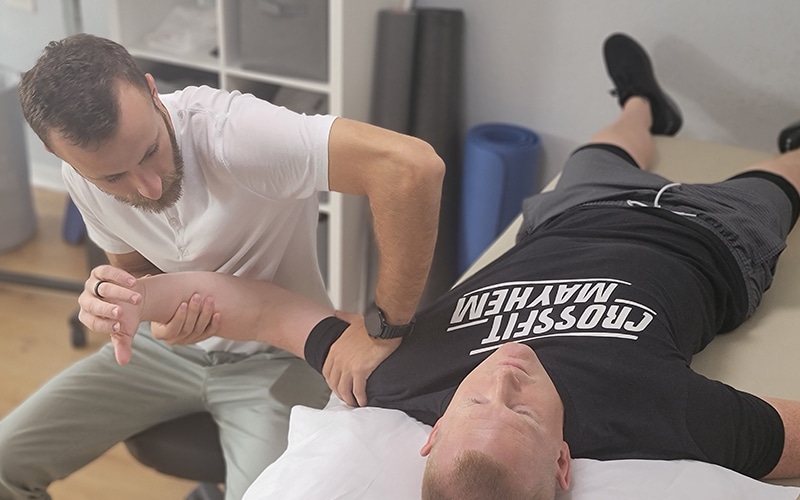
24/7 messaging access to your specialist
Ever have an issue or questions? We're here to help. Get 24/7 access to your specialist while you're under our care. Physical Therapy doesn't just happen when you're in our clinic, so we're here for you when you need us.
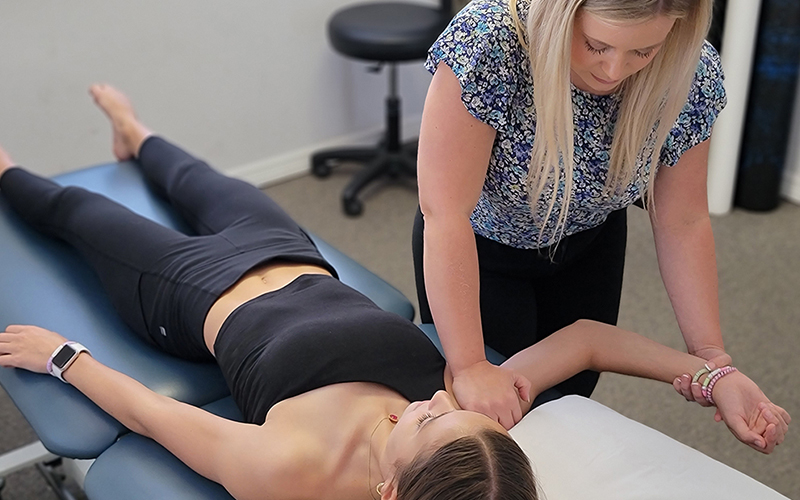
No waiting periods
Get off that waiting list and get the treatment you need. We're always ready to accept new patients, so you can get better faster and get back to a pain-free life that you deserve.
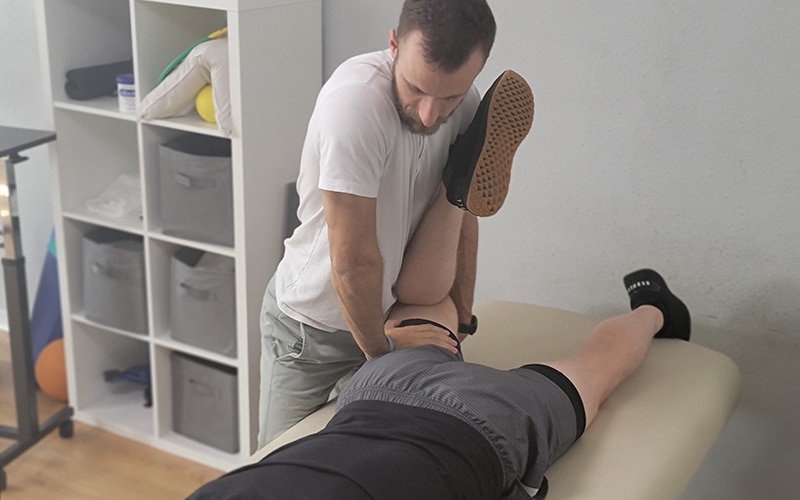
Not limited by insurance
Don't let the insurance companies tell you how much treatment you need. Avoid the limitations of short sessions that insurance provides and work with our Doctors when you need it and for as long as you need it.
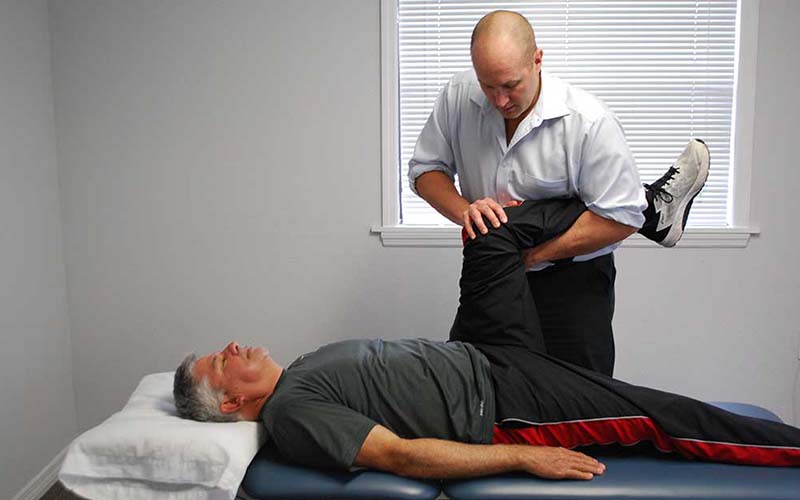
No painful injections, no expensive medications, no surgery
In order to truly solve your pain, we use a holistic approach to Physical Therapy, not relying on injections, medications, or surgery. Instead, we'll strengthen your body's weak points that are causing your pain.
MEET THE TEAM

RON MILLER, DPT, OCS, Cert DN
Doctor of Physical Therapy | Board Certified Orthopaedic Physical Therapy Clinical Specialist | Post-Doctoral Orthopaedic Residency Trained | Certified in Dry Needling | Titleist Performance Institute Certified
Dr. Ron Miller is the owner and founder of Pursuit Physical Therapy. His core belief is that it is not about the physician, the physical therapist, or the insurance company: it is about what is truly best for the patient. Dr. Miller started...

CAREY ROTHSCHILD, DPT, OCS, SCS, CSCS, CKTP
Doctor of Physical Therapy and Assistant Professor at the University of Central Florida | Board Certified Orthopaedic Clinical Specialist
| Board Certified Sport Clinical Specialist
Dr. Carey Rothschild is an Assistant Clinical Professor in the Doctor of Physical Therapy Program at the University of Central Florida. Dr. Rothschild earned a Bachelor of Health Science in Physical Therapy in 1999 from the University of Florida and a Doctor of Physical Therapy from Boston University in 2005...


MICHAEL FABRICK, DPT, Cert. DN
Doctor of Physical Therapy | Certified in Dry Needling | Pursuit Sports Performance Specialist | Professional Tennis Tour Physical Therapist
Dr. Michael Fabrick was born and raised in Hanover, Pennsylvania and attended Slippery Rock University where he received his Bachelor’s degree in Exercise Science. He then went on to receive his Doctorate Degree in Physical Therapy in May of 2020. During his final tenure as a Doctoral intern, he trained underneath Todd Ellenbecker, who is one of the world’s leading experts on shoulder rehabilitation and is the Vice President of Medical Services for the ATP World Tour...

MARYANN DANIELS, PT, MCMT, IDN
Physical Therapist | Dry Needling Certified | Mastery Certified In Manual Therapy | Pelvic Floor And Post Partum Specialist
Maryann was originally born in Connecticut but moved to Florida with her family at the age of 9 and she grew up in Jupiter, Florida. She then went to college at the University of Central Florida...


Kayla Cook, DPT, HSP, CSCS
Doctor of Physical Therapy | Hesch Sacroiliac Practitioner | Certified Strength And Conditioning Specialist | Ehlers-Danlos Syndrome Specialist | Volleyball Specialist
Dr. Kayla Cook was born and raised in Northern California and received her undergraduate degree in Kinesiology from California State University in Sacramento. She then received her Doctorate in Physical Therapy from The University of St Augustine for Health Sciences...
BECOMING PAINFREE IS EASIER THAN YOU THINK

Step 1:

Step 2:


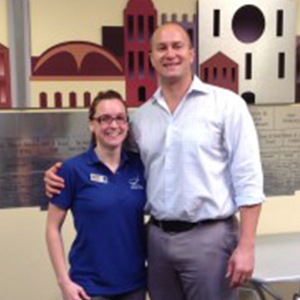 Rene N.
Rene N.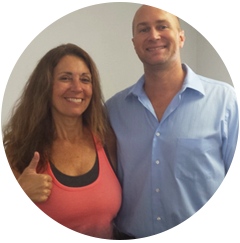 Lisa B.
Lisa B.